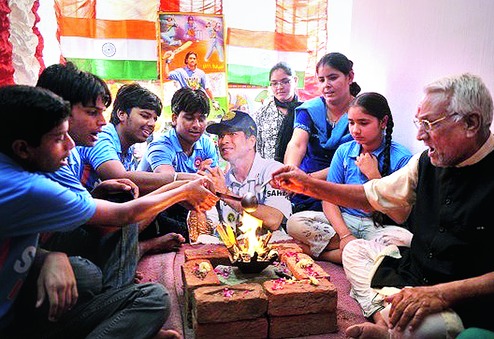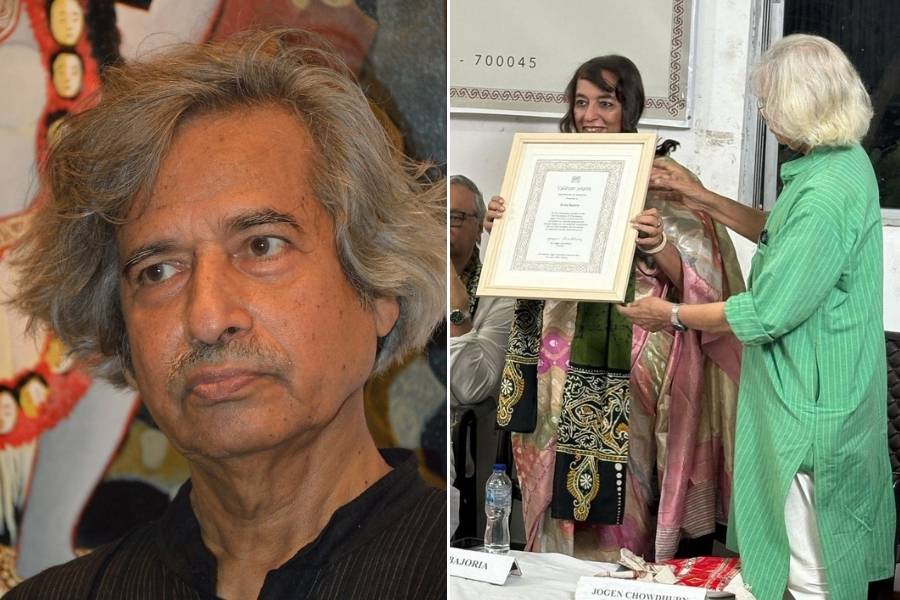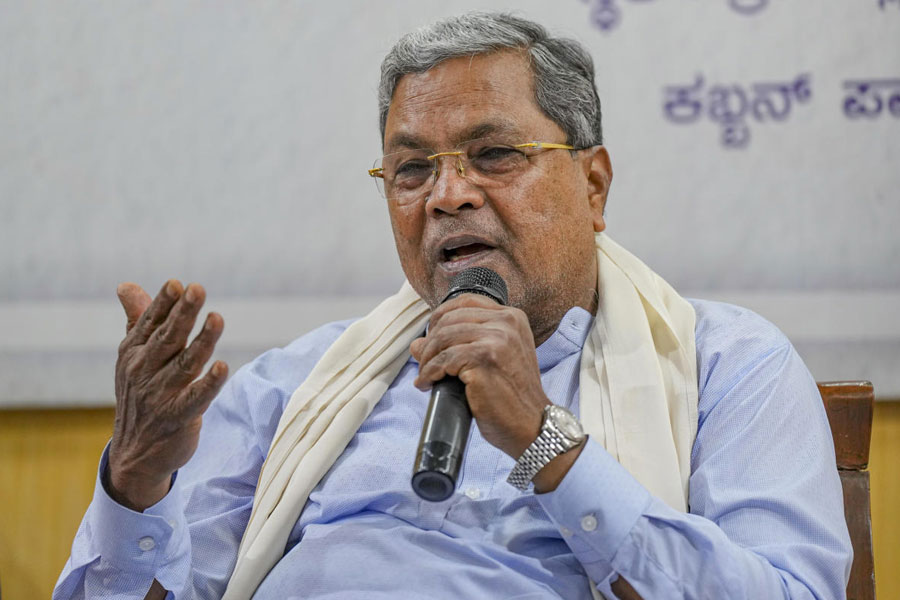
After Phil Hughes died, his loss was scrupulously mourned but cricket's pundits and policy-makers skated over his death's implications for the game. The question that his death raised about the bouncer as a legitimate delivery was mentioned, but in a pre-emptive way, to argue that it was a rare, random accident that changed nothing.
Pranay Sanklecha's closely argued piece, 'Why the bouncer is not essential to cricket' ( http://www.espncricinfo.com/blogs/content/story/811093.html), suggested that in the aftermath of Hughes's death, bowling a potentially lethal delivery raised moral questions that needed airing. Sanklecha, a moral philosopher, argued that the risks imposed on batsmen by the bouncer (injury, death) weren't offset by the benefits of short-pitched bowling (thrilling spectacle, test of courage). So bowlers and cricket's law-makers needed some other moral justification for bowling the bouncer or allowing it. That case, wrote Sanklecha, hadn't been made yet.
Sanklecha's piece set me thinking about the way in which my generation of fans judged batsmanship during cricket's helmet-less past. Through the Sixties and Seventies, our opinion of a batsman turned on his ability to cope with the threat of being maimed by fast, short-pitched bowling. Thus, I accepted without question the opinion of my elders that Polly Umrigar was a prolific batsman but not a sound one because he was scared of genuinely quick bowling. The evidence for this was that on the '52 tour of England not only did he average less than seven runs an innings against Bedser and Trueman, he was also bowled three times backing away from the stumps.
Ten years later, Nari Contractor had his head broken by Charlie Griffith in Barbados. This did nothing to change cricket's ruthless assessment of batting character: any batsman who was obviously nervous against short-pitched bowling was flawed in a fatal way. It wasn't just any weakness: it was the weakness. The reason Indian fans worshipped Sunil Gavaskar was not just because he scored a mountain of runs but also because he scored them as an opening batsman against fresh fast bowlers without a helmet, even after wearing helmets became normal. There is a machismo about batting that runs through cricket like a red thread, a cult of the toreador that depends on the prospect, however remote, of serious injury, or, as in the case of Phil Hughes, death.
Dennis Amiss invented an improvised helmet to cope with the fast-bowling ferocity of World Series Cricket. There is a nice coincidence between the general adoption of Amiss's innovation and the beginning of the long decline of professional boxing as a respectable sport. The willingness to be seriously hurt on a serial basis stopped being the hallmark of sporting ability in the late Seventies.
Forty years ago, Muhammad Ali's victory over George Foreman in Zaire was celebrated. Norman Mailer wrote a book-length account of it in 1975. Ali's rope-a-dope tactic, his willingness to be pummelled by the brutally strong younger man till he tired him out, was hailed as the ultimate synthesis of courage and genius. By the end of that decade, with Ali showing early signs of being permanently punch-drunk, it came to be seen as a cautionary tale. If Norman Mailer had written his book 10 years later, he'd have had a much smaller readership; blood sports weren't cool any more.
The helmet rescued cricket: it allowed the game to have its cake and eat it too. The batsman's visceral response to a bouncer remained a feature of cricket but the delivery was dragged into the scope of civilized sport by the immunity to death or serious injury that the helmet guaranteed. Hughes's death cancelled that guarantee, making Sanklecha's question about the bouncer's legitimacy inevitable.
The stock answer to his question has several variants but it basically contends that a batsman squaring up to the short-pitched ball is thrilling in a way that nothing else in cricket is on account of the frisson of physical danger. Banning the bouncer, the argument goes, emasculates cricket as a contest.
This isn't the first time in cricket's history that a batsman's courage has been tied to his virile willingness to risk serious injury. I remember the manly critics who thought Mohinder Amarnath was a wimp for walking out to bat wearing a pith helmet; I was one of them. This was 1979; Amarnath had had his skull cracked by Richard Hadlee earlier that year, so when he walked out to face the fearsome Rodney Hogg in Bombay, he wore a sola topi as insurance. It didn't work: he fell ignominiously on his stumps and was consigned to the cricketing wilderness for three long years.
Amarnath's long, interrupted career spanned cricket's epochal transition from bareheaded batsmen to helmeted ones. Without a helmet in his early career, he was a batsman notorious for his fragility against short-pitched fast bowling. Wearing a helmet he was widely acknowledged as one of the best players of fast bowling in the world. He scored two centuries in the first 10 years of his career without a helmet and nine over the next 10 years with it on. Without the helmet, he would have been consigned to the ranks of the afraid and unsound - one more pretender who couldn't do what real batsmen did: face death down.
The argument that the bouncer isn't meant to injure the batsman but to push the batsman on to the back foot, is disingenuous. Parikshit Ghosh, economist and fan, points out that the bowler's aim is to force an error using the threat of injury. It's worth noting in this connection that cricket's law-makers have consistently treated short-pitched bowling as a special case. There has always been a provision that allows umpires to step in to curb intimidatory bowling. There was a period when Test cricket limited bouncers to one an over. Once upon a time fast bowlers didn't bounce tail-enders. That chivalric consideration disappeared when helmets turned bowlers into better batsmen by indemnifying them against sudden death. Then Hughes's death reminded us that anyone, batsman or bowler, hero or coward, can be killed by the bouncer.
We didn't know that through the helmet era and we shouldn't pretend we did. We learnt it from Phil Hughes's death, so implying that nothing has changed because every batsman always knew what the score was, is blithe and wrong.
I don't know if Hughes's death is sufficient reason for banning the bouncer. Watching Kohli hook Johnson through mid-wicket in Adelaide was thrilling in a way that a cover-drive can't be. Physical danger does make for keener spectacle. But even in a world without head-high bouncers there will still be bruised ribs, broken arms and battered boxes. These should suffice to serve the cause of excitement unless we want to argue that there is an adrenalin rush that only vulnerable heads (and necks) can supply. There's no historical reason to believe that we won't learn to love cricket minus the coconut shy. Remember, cricket's public accepted batsmen in helmets without demur; they didn't dismiss them as pygmies unfit to fill the shoes of the bare-headed heroes of the Epic Age.
Amartya Lahiri (drawing on the numeracy characteristic of economists and his own experience as an opening batsman in club cricket), argues that Hughes's death is tragic but the risk of being bounced to death is statistically irrelevant. Parikshit Ghosh asks if the unit of analysis is the risk per ball played or the risk per career. Those making the case for the status quo might consider what they'll say if someone else dies on a cricket pitch a month or a year from now. Cricketing deaths will remain statistically insignificant, but appalled fast bowlers and innumerate fans might begin to wonder if the game should be rolling the dice.
It may well turn out that banning the bouncer is too radical a response to one death. But to dismiss the question on account of an anxiety about the game's continuing virility is, well, unwise. It shuts down a conversation that cricket needs to have. After Hughes died, most of us went along with the 'move on, nothing to see' bluffness of cricketing common sense. I'm glad Pranay Sanklecha didn't. We should talk this through.
mukulkesavan@hotmail.com










